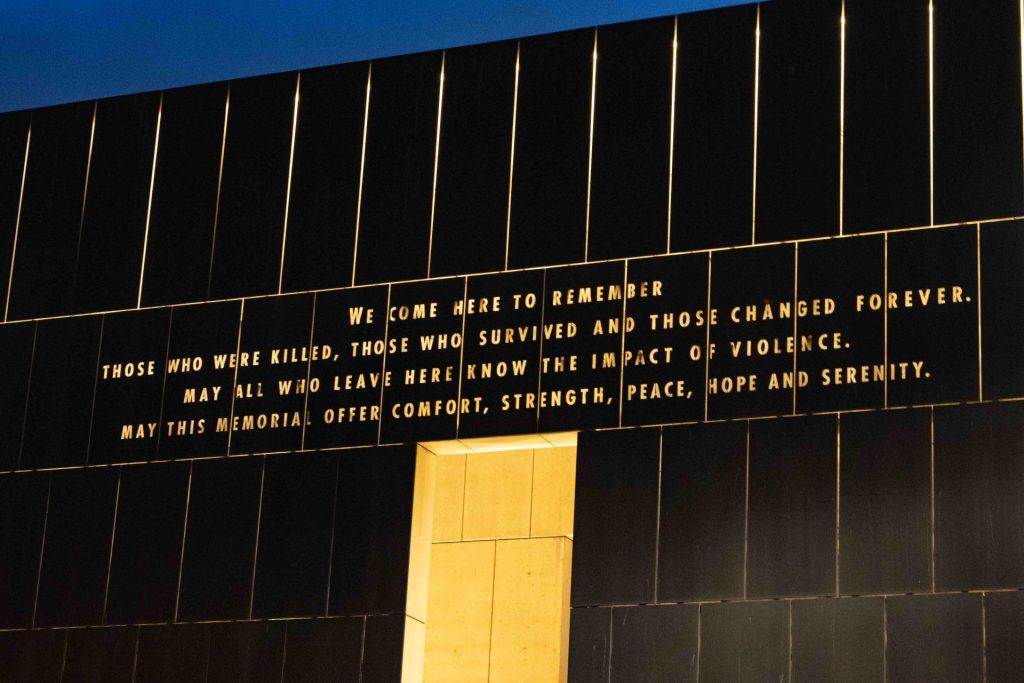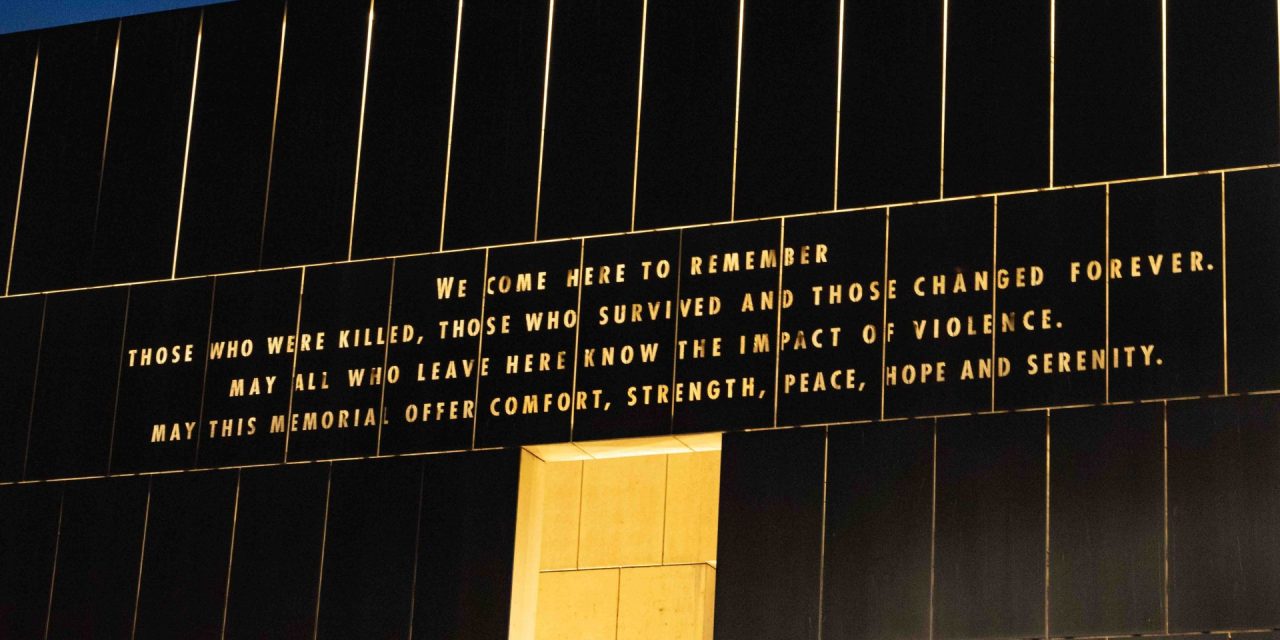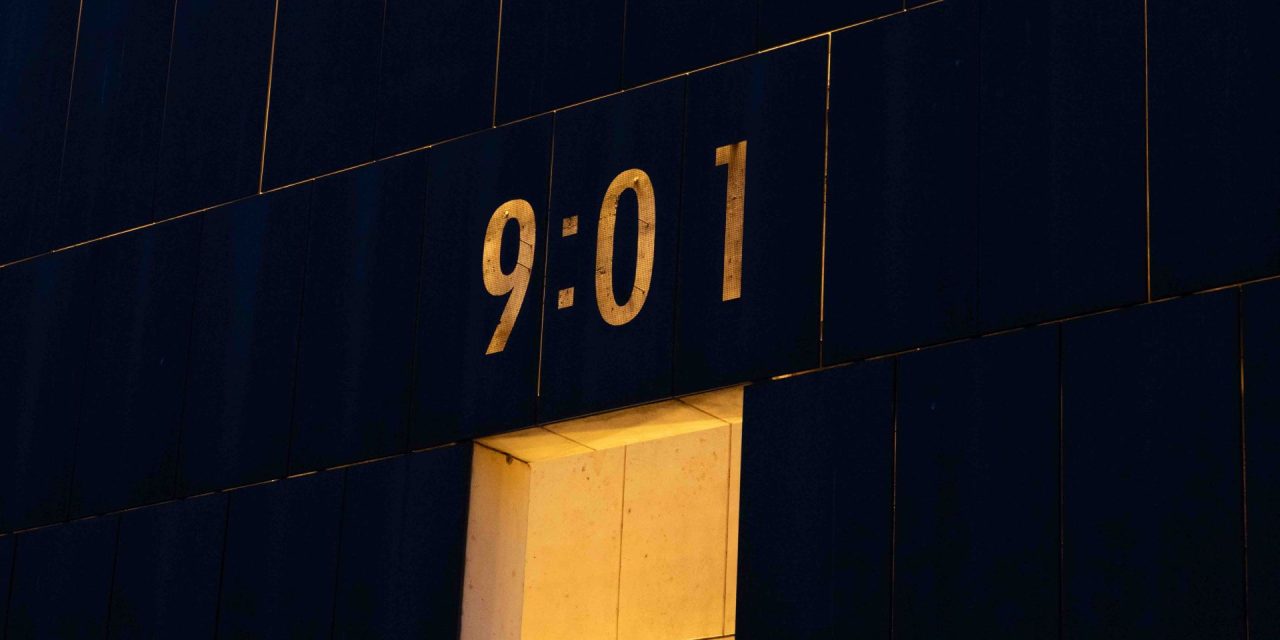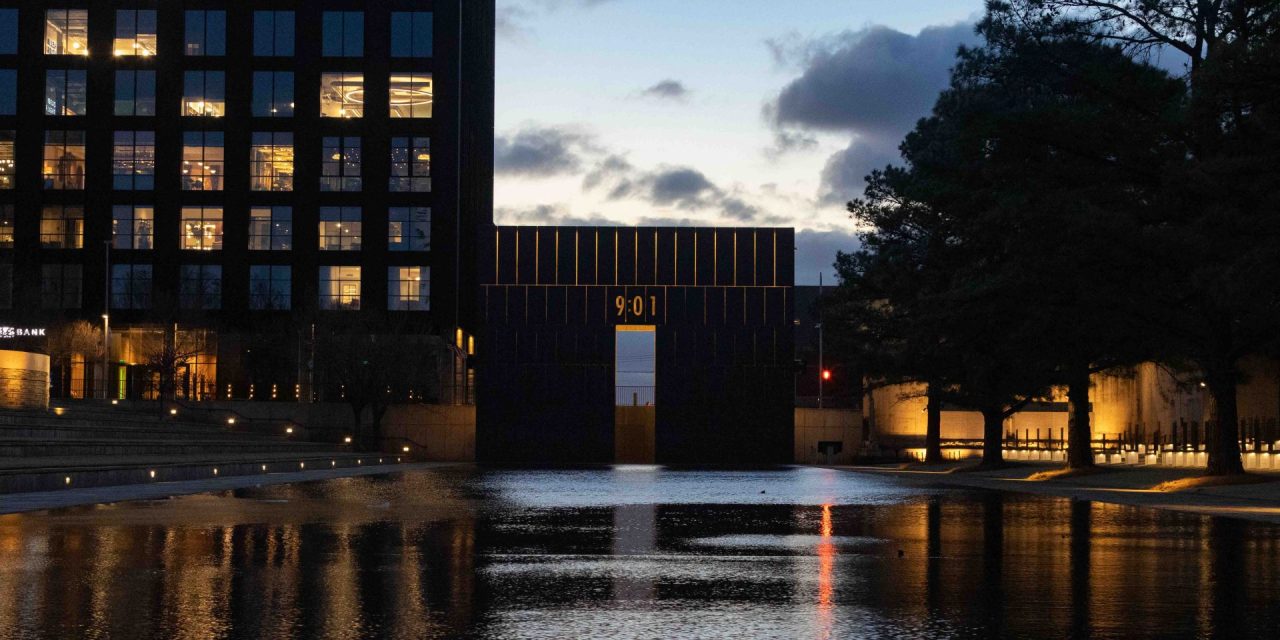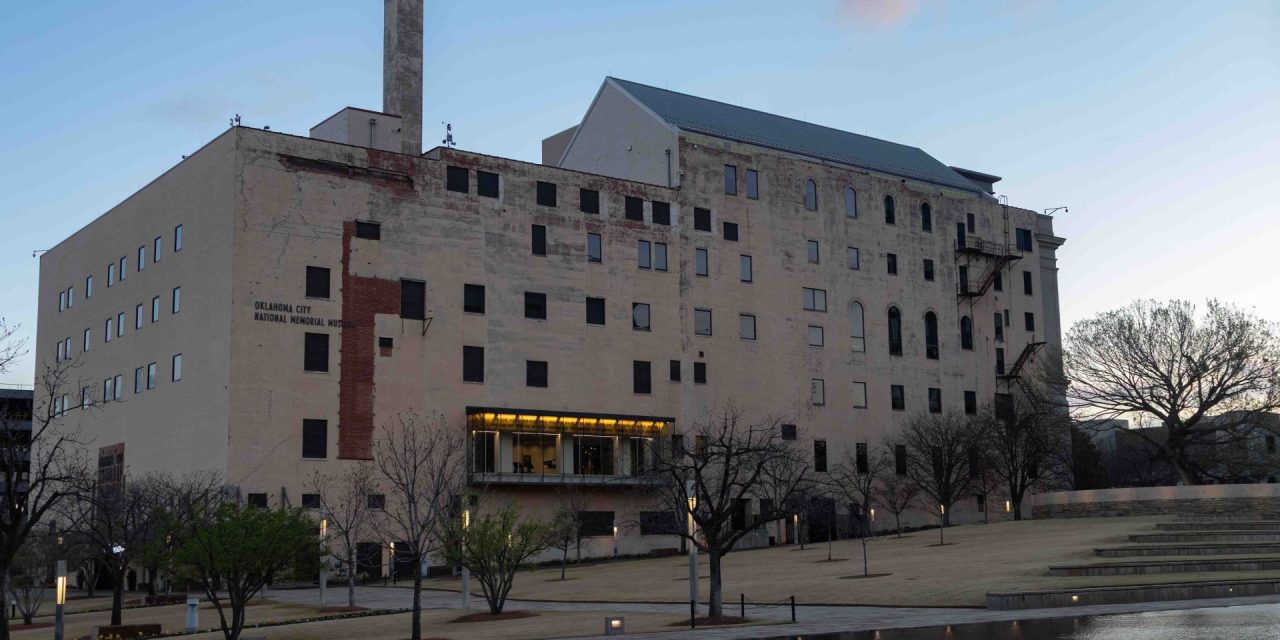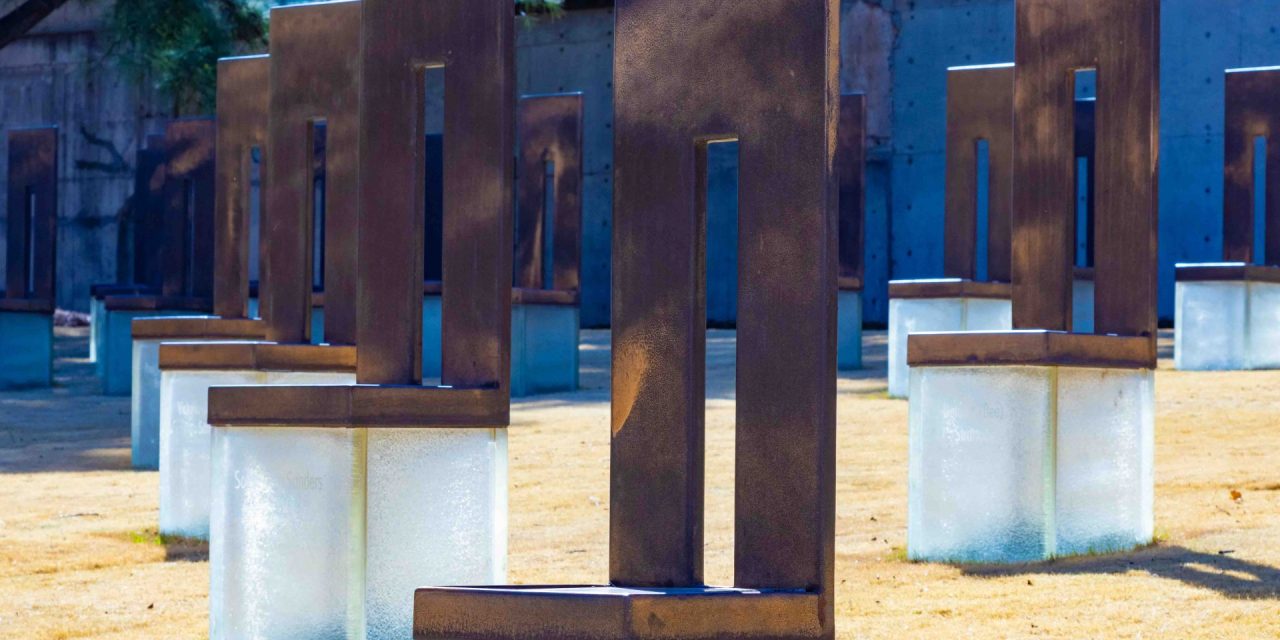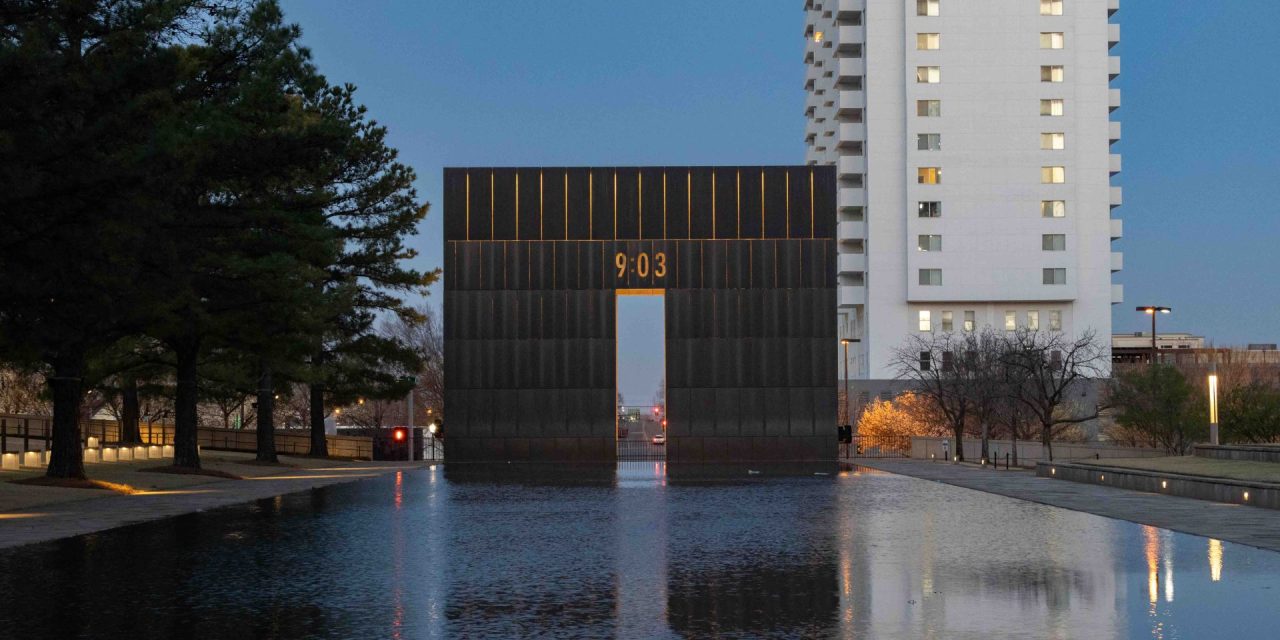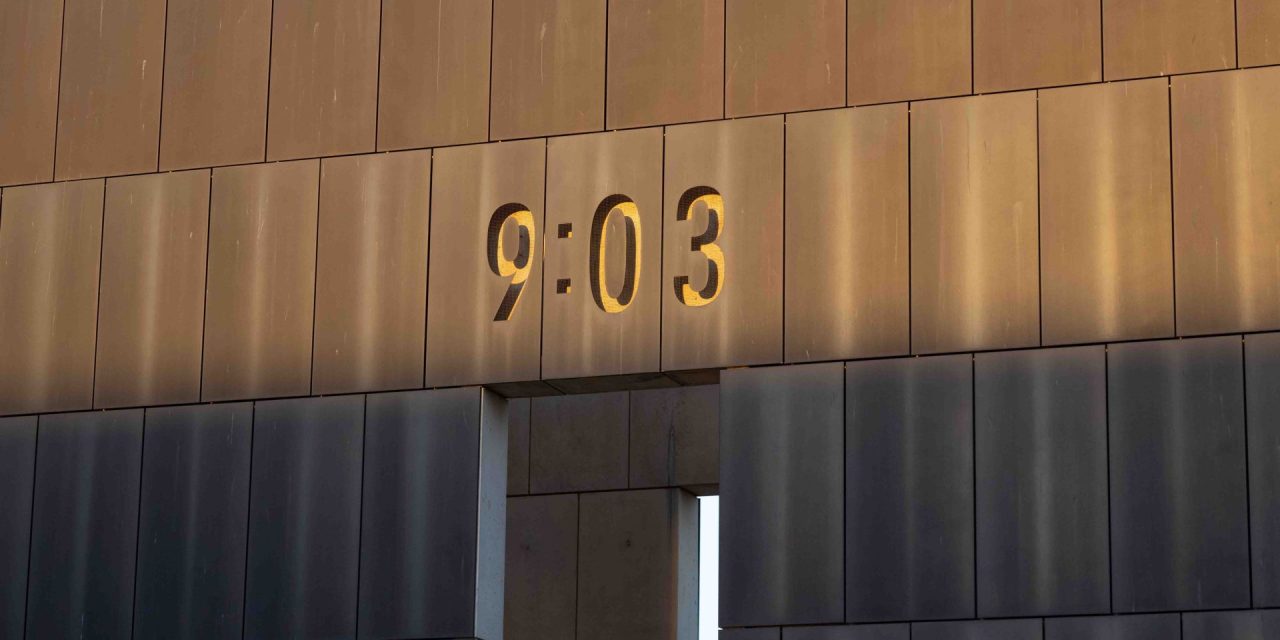At 9:02 a.m., Wednesday, April 19, 1995, a huge explosion rocked downtown Oklahoma City, and an ominous pillar of black smoke soared into the bright azure sky above the center of the state’s capital city. Shocked and stunned residents watched in disbelief, wondering what had happened.
Because of almost immediate television coverage, it took only a few minutes for most residents to learn that the explosion was the result of a powerful bomb placed inside a 24-foot Ryder rental truck parked in front of the Alfred P. Murrah Federal Building at 200 N.W. 5th St.
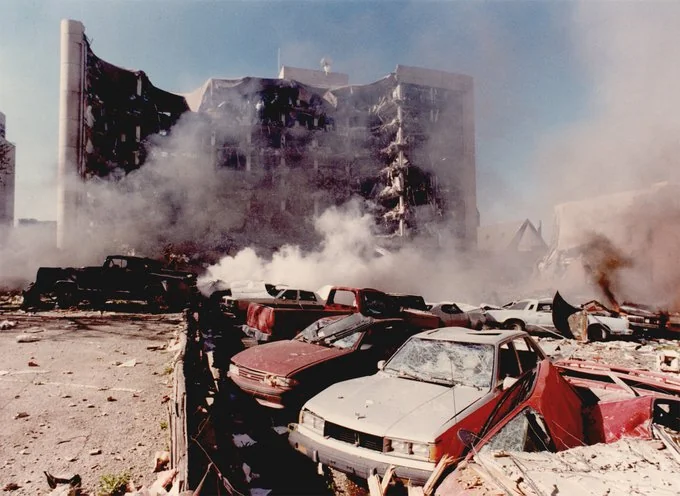
The nine-story building contained about 315,000 square feet of occupiable space; 107,000 square feet of office space, 196,000 square feet for storage and 11,750 square feet that included rest rooms and a cafeteria. The building cost an estimated $13.2 million to construct during an 18-month project completed in March 1977 and the structure was dedicated in October 1977.
The building was named for Alfred Paul Murrah (Oct. 27, 1904–Oct. 30, 1975), who was a prominent judge. Located in the building were regional offices for the Social Security Administration, the U.S. Department of Housing and Urban Development, the United States Secret Service, the Department of Veterans Affairs vocational rehabilitation counseling center, the Drug Enforcement Administration (D.E.A.), and the Bureau of Alcohol, Tobacco, and Firearms (ATF). It also contained recruiting offices for the U.S. military.
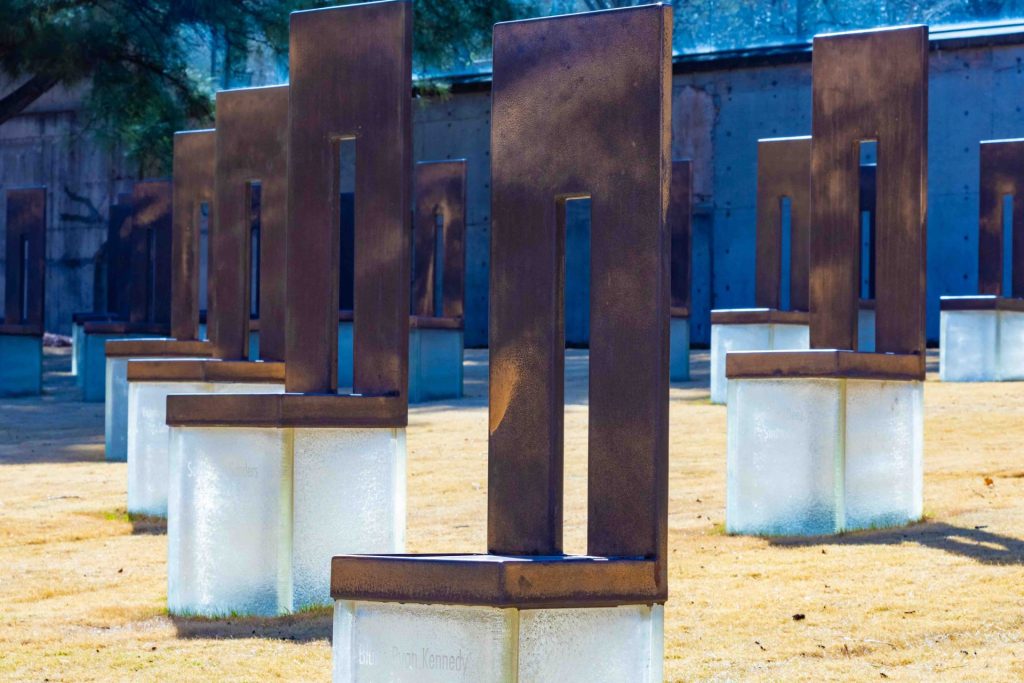 At the time of the blast, the Murrah Building housed some 550 federal and contract workers, as well as an estimated 250 visitors. The explosion represented the most destructive—and costly in the terms of lives taken—act of domestic terrorism carried out in U.S. history.
At the time of the blast, the Murrah Building housed some 550 federal and contract workers, as well as an estimated 250 visitors. The explosion represented the most destructive—and costly in the terms of lives taken—act of domestic terrorism carried out in U.S. history.
The blast was felt as far as 30 miles away and damaged 347 buildings in the immediate area. Thirty buildings were heavily damaged. In the aftermath, almost 20 buildings were torn down. Twenty blocks of downtown Oklahoma City were cordoned off due to the extent of the bomb damage. Tragically, 168 lives were lost, including three unborn babies, and hundreds more people were injured.
Oklahoma Baptists were among the first to respond to the tragedy and by May 5, donations totaling $263,530.08 had been received by the Baptist General Convention of Oklahoma (BGCO). Disbursements were coordinated by local churches, with requests overseen by a relief fund committee headed by BGCO Executive Director-Treasurer William G. Tanner and Convention President Charles Graves, pastor of Oklahoma City, Quail Springs. Others on the committee included Anthony L. Jordan, pastor of Oklahoma City, Northwest; Rod Masteller, pastor of Oklahoma City, Putnam City and Capital Association Executive Director Ernie Perkins.

It was determined later that Timothy McVeigh, a disgruntled former U.S. serviceman, carried out the bombing that killed 168 people—as well as three unborn babies—and injured more than 680 others. The bombing was the deadliest act of terrorism in the United States prior to the Sept. 11, 2001 attacks on the World Trade Center in New York City and the Pentagon. McVeigh was arrested shortly after the bombing and indicted on 160 state offenses and 11 federal offenses, including the use of a weapon of mass destruction.
He was found guilty on all counts in 1997 and sentenced to death. He was executed by lethal injection on June 11, 2001. Co-conspirators Terry Nichols and Michael Fortier were also convicted. Nichols was sentenced to eight life terms for the deaths of eight federal agents, and to 161 life terms without parole by the state of Oklahoma for the deaths of the others. Fortier was sentenced to 12 years’ imprisonment and was later released.
Tragically, among the lives lost that spring morning were 19 children under the age of 6 being cared for in the America’s Kids Day Care Center on the second floor. The total number of lives lost would increase by one with the ensuing death of a first responder—nurse Rebecca Anderson—who died as the result of a piece of concrete striking her in the back of the head while she was engaged in rescuing survivors.
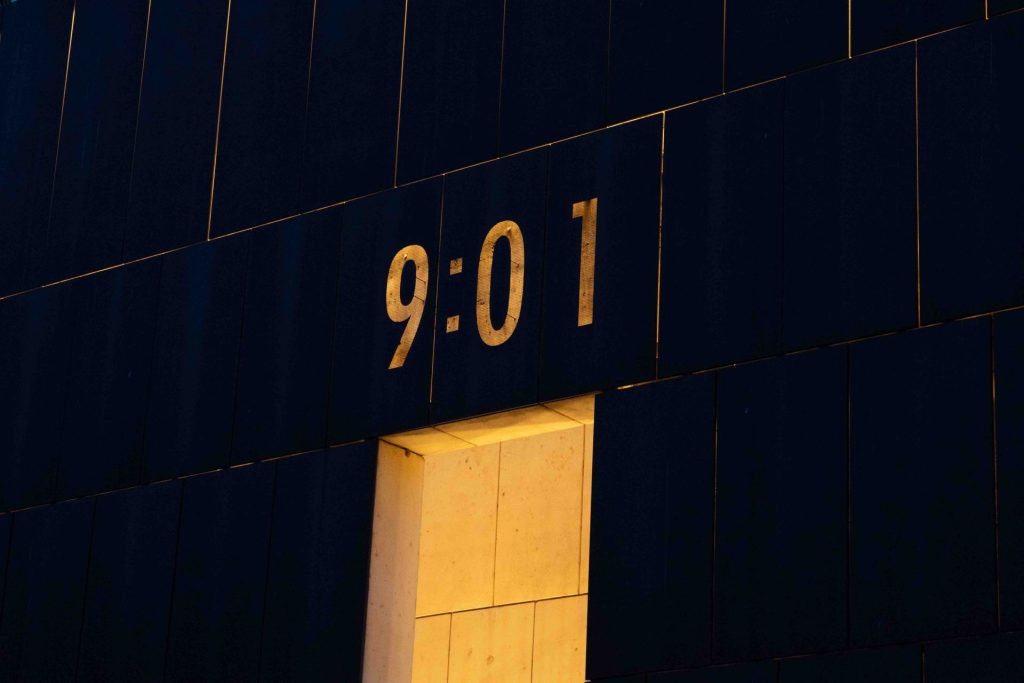
More than two decades earlier, Oklahoma Baptist Disaster Relief (DR) volunteers had been organized and specifically trained to respond to disasters. The state had been divided into four quadrants—divided by I-40 and I-35—each with a team of volunteers under the supervision of an area leader. This enabled more volunteers to become involved in ministry without calling the same team to respond time after time. All volunteers and leaders of the four areas were called upon to help in the response to the Oklahoma City bombing.
According to the 1995 Oklahoma Baptists Annual Report, 55 OSBDR volunteers prepared approximately 6,000 meals for rescue workers, and 21 volunteers provided emergency day care at Shepherd Mall Shopping Center at N.W. 23rd St. and Villa Ave. for 11 days. A total of 93 children were given supervised care at the request of the Federal Emergency Management Agency (FEMA).
As the dust from the destroyed Murrah building was settling, Southern Baptist chaplains, including BGCO chaplaincy and community services specialist Joe Williams; Oklahoma City Police Department chaplain Jack Poe, Oklahoma City Fire Department (OCFD) chaplain Ted Wilson and Cleveland County Sheriff’s Office chaplain Paul Bettis—ministered to teams searching the Murrah Building for survivors. Chaplains ventured into the shattered remains of the Murrah Building with search teams of police and fire crews and provided debriefing and counseling services for the first responders who worked under grueling, dangerous and horrifying circumstances.
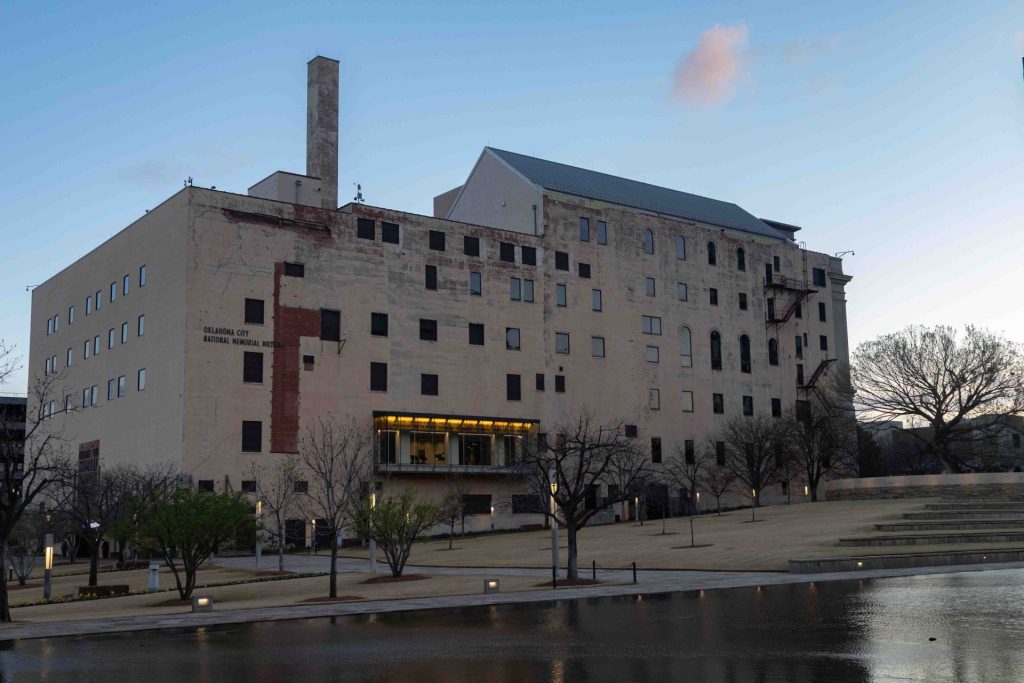
The chaplains’ work continued during the duration of search and rescue operations, and for months after the building was demolished as they counseled with men and women whose lives were devastated by the tragedy. Rescue and recovery efforts were concluded at 11:50 pm on May 1, with the bodies of all but three victims recovered.
Bettis, who also was working in prison chaplaincy at the time, later served as Oklahoma Baptists chaplaincy specialist from 2002-2013. As the bombing response continued, he was involved—along with officers with the U.S. Drug Enforcement Agency—in serving death notifications to family members.
Wilson, who was the OCFD volunteer chaplain at the time, was kept busy 16-18 hours a day, leading continuous Critical Incident Stress Management sessions. He said a total of 985 OCFD firefighters participated in the rescue and recovery effort after the bombing. In addition, there were about 250 police officers. All told, there were more than 25,000 people who worked the site, he said.
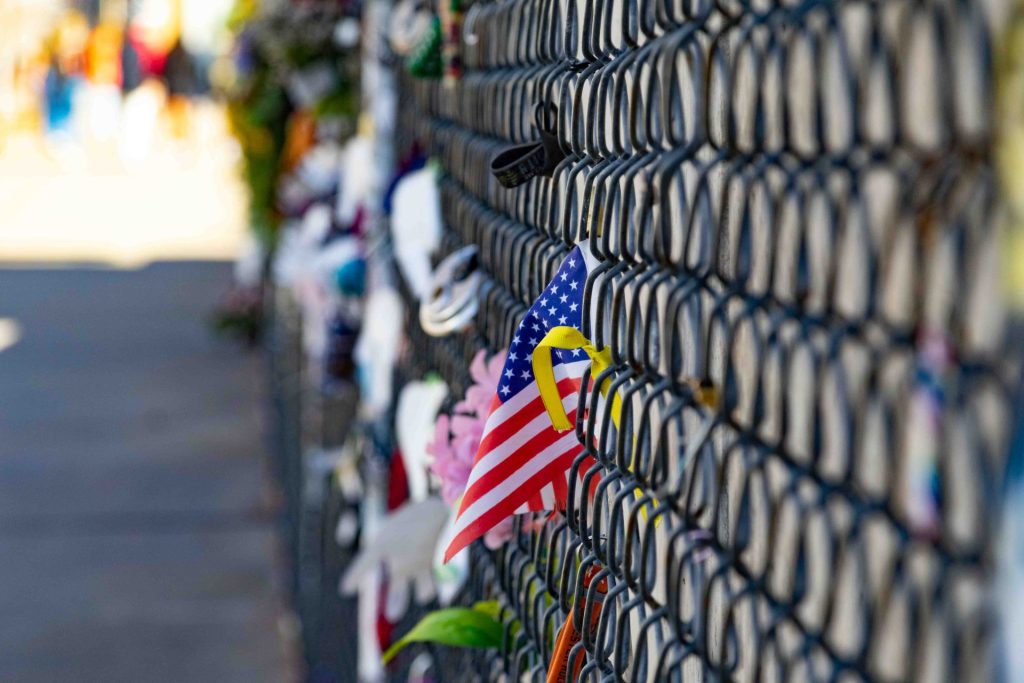 Not only did Williams, who died in 2016 from bladder cancer, minister as a chaplain, but he also later represented Oklahoma Baptists as a member of the committee that distributed donated funds to survivors and victims’ families. Also serving on that distribution committee was Wilson, who, at the time of the bombing, was fresh out of rookie school. Wilson retired as OCFD chaplain after serving in that capacity for 30 years.
Not only did Williams, who died in 2016 from bladder cancer, minister as a chaplain, but he also later represented Oklahoma Baptists as a member of the committee that distributed donated funds to survivors and victims’ families. Also serving on that distribution committee was Wilson, who, at the time of the bombing, was fresh out of rookie school. Wilson retired as OCFD chaplain after serving in that capacity for 30 years.
Records showed that as of Aug. 9, 1995, donations to help victims and their families and relief workers totaled $678,862.63 with $264,758.31 having been disbursed. Initially, $125,000 was placed in an account with the Baptist Foundation of Oklahoma by a new seven-member Oklahoma City Disaster Relief Committee appointed by Tanner to oversee the management of funds received by BGCO for that purpose. (The committee, enlisted in January 1996, included Williams as chairman, Adams, Tom Cole, Norma Corley, Kenneth de Cordova, Bob Haskins and Bob Rutherford. The group met Feb. 5, May 21, June 24, and Aug. 28). A later update of the fund revealed that contributions totaling $691,350.92 had been received, and disbursements of $314,582.31 had been made to assist victims of the disaster.
In the days and months following the bombing, the response and outpouring of love and self-sacrifice made by Oklahomans came to be known as the “Oklahoma Standard.”
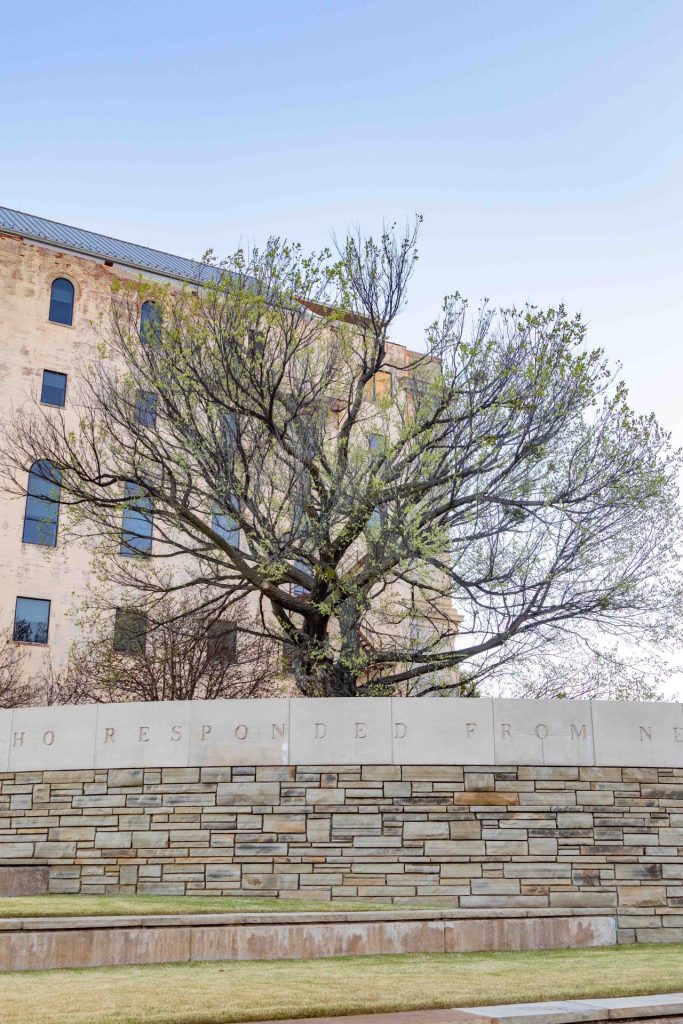 Jordan, now retired as executive director-treasurer of Oklahoma Baptists, wrote 20 years after the tragedy in his Perspective column in the Baptist Messenger that, “In the hours and days that followed the bombing, one thing became clear. Oklahoma faced tragedy in a different way than had been evidenced in other parts of the country and world. Volunteers, companies and first responders rushed to the site, offering themselves, equipment, food and anything needed to help with the search and rescue effort… No need went unmet.”
Jordan, now retired as executive director-treasurer of Oklahoma Baptists, wrote 20 years after the tragedy in his Perspective column in the Baptist Messenger that, “In the hours and days that followed the bombing, one thing became clear. Oklahoma faced tragedy in a different way than had been evidenced in other parts of the country and world. Volunteers, companies and first responders rushed to the site, offering themselves, equipment, food and anything needed to help with the search and rescue effort… No need went unmet.”
The OSBDR feeding unit was set up on the parking lot of Oklahoma City, First, located a few blocks north of the Murrah Building site. The operation was discontinued after four days, however, because Oklahoma City officials requested all feeding for police, fire and chaplaincy teams be done at the Myriad Convention Center by members of the Oklahoma Restaurant Association.
Many well-meaning food vendors, desiring to help, had been bringing in pizza, hamburgers, hot dogs and other foods and leaving them without proper temperature and sanitary controls. This was cited as the reason for the change in feeding operations. The safeguards were instituted for the health of the
rescue teams.
As people across Oklahoma, the nation and the world recognize the 30th anniversary, the refrain “We Will Always Remember” stands true. Remember the 168. Remember that even in the face of tragedy and unspeakable loss, God will bring about good.
